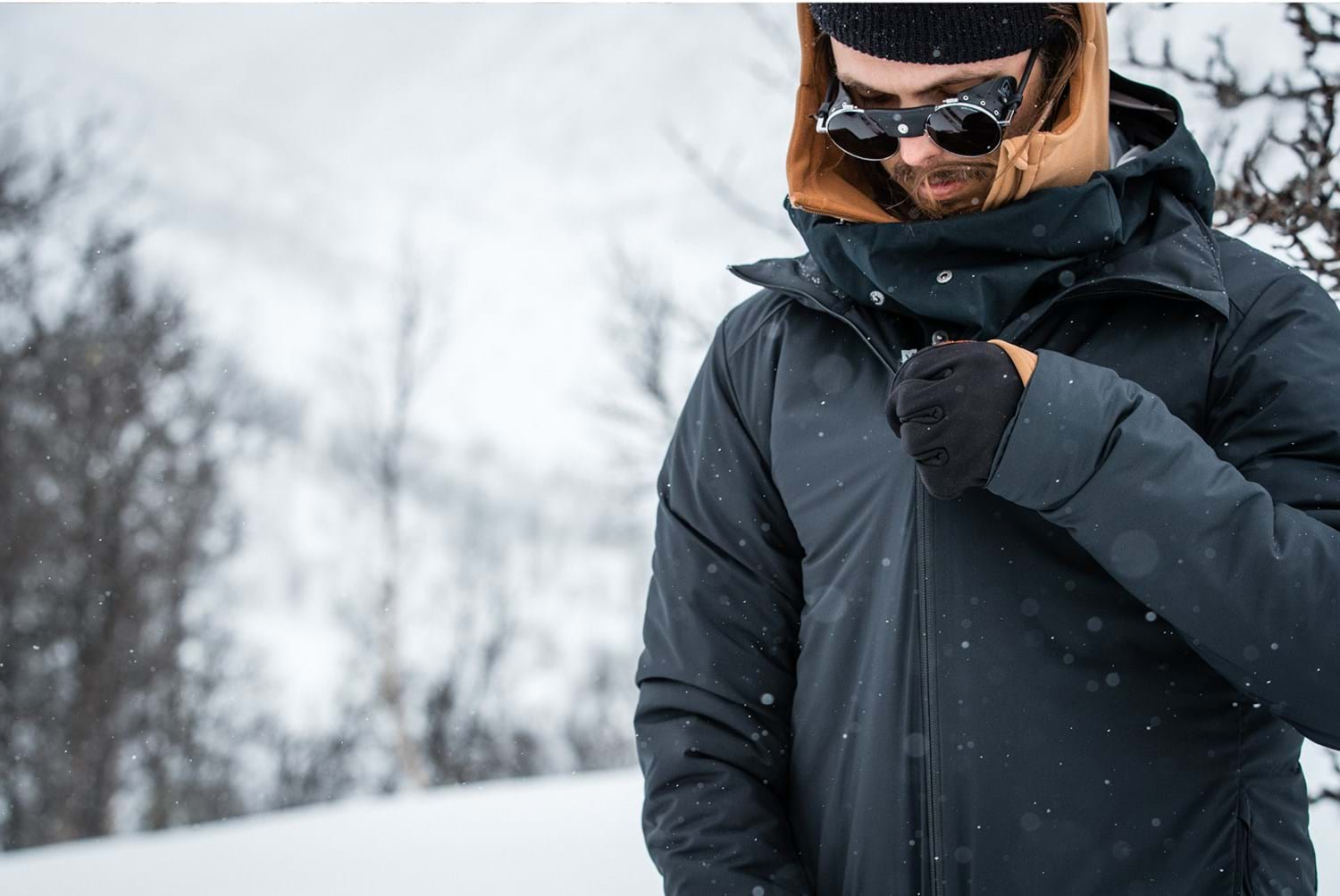Guide: Waschanleitung und Produktpflege
Die Pflege von technischer Kleidung ist nicht schwierig, und durch richtiges Waschen und Imprägnieren können Sie die Lebensdauer Ihrer Kleidung erheblich verlängern.
Allgemeine Waschhinweise
- Vermeiden Sie die Verwendung von Weichspülern. Diese wirken sich negativ auf die Funktion der Kleidungsstücke und die Umwelt aus. Der Weichspüler hinterlässt eine Beschichtung auf den Fasern des Kleidungsstücks, die den Feuchtigkeitstransport und die Atmungsaktivität des Kleidungsstücks beeinträchtigt. Einige Inhaltsstoffe der Weichspüler sind biologisch schwer abbaubar und schädlich für Wasserorganismen. Außerdem enthalten sie Parfüm und Stoffe, die allergische Reaktionen hervorrufen können.
- Achten Sie darauf, dass die Reiß- und Klettverschlüsse beim Waschen geschlossen sind. Das reduziert das Risiko, dass Stoffe während des Waschens an scharfen Kanten hängen bleiben und Fusseln bilden. Ein Waschbeutel schützt alle Stoffe und Kleidungsstücke vor Zerreißen und Überdehnung in der Waschmaschine. Außerdem reduziert dieser beim Waschvorgang den Austritt von Mikrofasern und verhindert damit, dass Mikroplastik in Flüsse und Meere gelangen kann. Sie können den Waschbeutel GuppyFriend hier in unserem Webshop oder in unseren Geschäften kaufen.
- Die meisten Oberbekleidungsstücke, vor allem Shell- und Isolationsbekleidung, besitzen eine sogenannte DWR-Imprägnierung (DWR, Durable Water Repellency). Sie dient dazu, den Außenstoff wasserabweisend zu machen. Wenn sich diese nach ein paar Saisons abnutzt, wird der Oberstoff der Außenschicht nass, obwohl die Membran immer noch das Eindringen von Wasser in das Kleidungsstück verhindert. Falls das passiert, können Sie die DWR mit einem Wash-in-Produkt oder einem Spray erneuern. Sie können OrganoTex, organische DWR, im Webshop oder in unseren Läden kaufen.
Lüften Sie Ihre Kleidung
Wir waschen unsere Kleidung normalerweise zu oft. Kaum oder nur geringfügig verschmutzte Kleidung kann stattdessen ausgelüftet werden. Frische Luft ist gut für Menschen und Kleidung. Es wird oft behauptet, dass wir heute mehr Zeit mit Wäschewaschen verbringen als in den 1940er-Jahren, als Waschmaschinen noch sehr selten waren.

Lüften Sie, was nicht zu schmutzig ist. Frische Luft ist gut für Mensch und Kleidung.
Produktpflege und Nachhaltigkeit
Die ökologische Gesamtauswirkung eines Textilprodukts hängt zum Großteil davon ab, wie lange das Produkt (vor Verschleiß) genutzt werden kann, wie gut es gepflegt wird und was mit ihm geschieht, wenn es für den ursprünglichen Zweck nicht mehr verwendbar ist. Ein guter Anfang ist es, stabile Kleidung mit zeitlosem Design aus recycelten und/oder recycelbaren Fasern zu wählen. Auch die Art und Weise, wie Sie Ihre Kleidung während des Tragens pflegen, macht einen großen Unterschied. Nicht nur für die Umwelt, sondern auch für die Funktion Ihrer Produkte.
Es gibt eine Reihe ökologisch zertifizierter Wasch- und Reinigungsmittel, die die Auswirkungen des Waschvorgangs auf die Umwelt reduzieren. Die Füllmenge von Waschmaschine oder Trockner spielt die größte Rolle für den Energie-, Wasser- und Waschmittelverbrauch. In kleinen Haushalten ist das Füllen der Maschine oft schwierig; die Waschanleitungen einiger Kleidungsstücken empfehlen die „separate Wäsche“.
Bitte kontaktieren Sie uns, wenn Sie weitere Tipps und Ratschläge benötigen, wie Sie Ihre Kleidung am besten und langfristig pflegen können. Besuchen Sie unsere Geschäfte oder wenden Sie sich online an uns, um Hilfe bei der Reparatur von Kleidungsstücken zu bekommen, sie zum Recyceln zurückzugeben oder einen Waschbeutel und Pflegeprodukte zu kaufen.
Garantie
Unsere Designphilosophie beinhaltet, Ihnen Produkte zu bieten, die lange halten. Produkte, die aufgrund ihrer Qualität, ihres Stils und ihrer Funktionalität einfach nicht ersetzt werden müssen.Deshalb bieten wir eine lebenslange Produktgarantie. Mehr lesen.
Pflegemittel für Kleidung
Houdini Sportswear. Alle Rechte vorbehalten.
